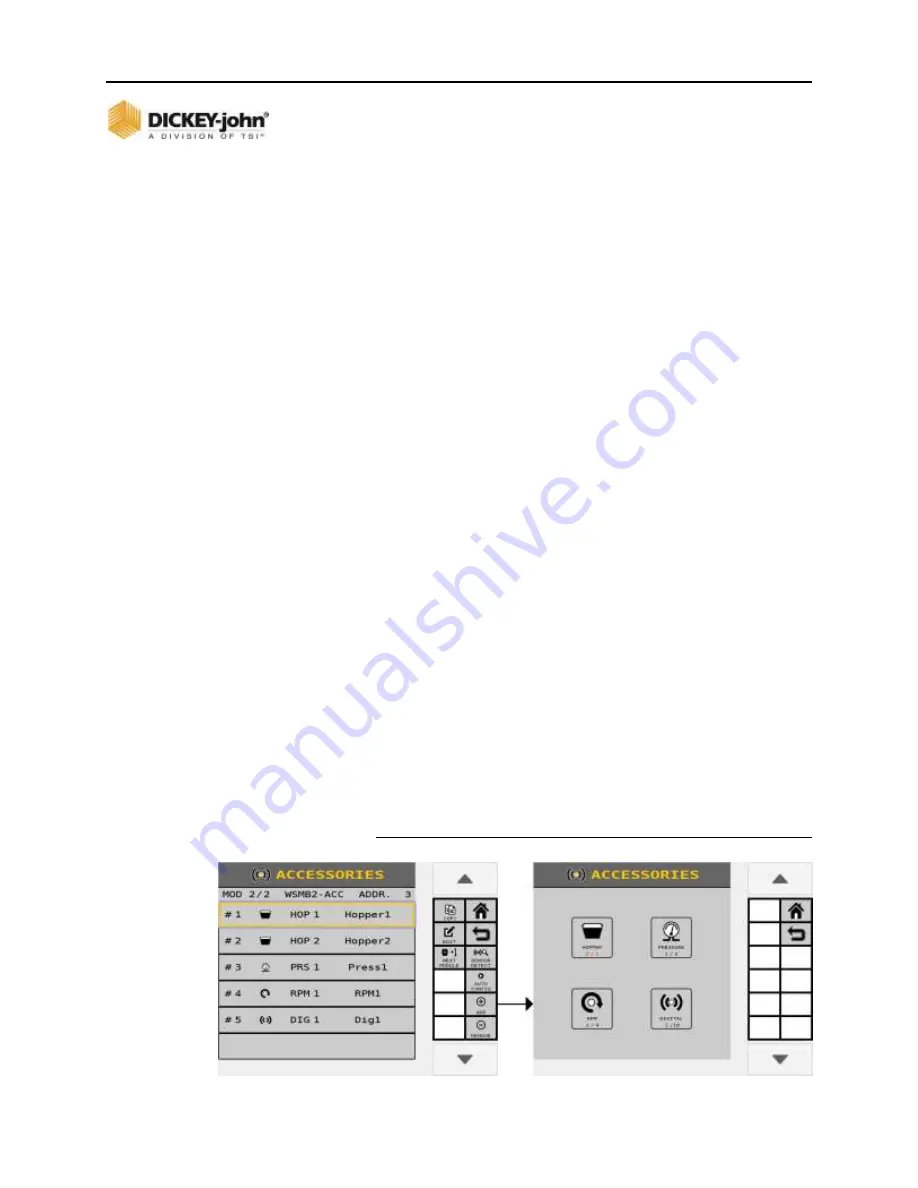
OPERATOR’S MANUAL
132 / ACCESSORY SENSORS
ISO
6
Version 4 UL 2_3 Manual
6011258 Rev C
Performing a Sensor Detect checks the system configuration to
verify that sensors configured match the actual number of
sensors connected to a module. Sensor Detect is performed on
all modules. Sensor Detect only detects Pressure and Hopper
accessory sensors.
An alarm may trigger if any missing sensors are found or too
many sensors are configured.
If an alarm occurs, verify that the number of sensors at the
Sensor Summary screen matches the actual number of
sensors connected to the appropriate module.
Confirm that all harnessing and sensors are
connected properly.
Pressing the
AUTO CONFIG
button performs a Sensor
Detect and automatically configures unassigned sensors.
AUTO CONFIG
only works for Pressure and Hopper sensors.
RPM and Digital sensors must be configured manually.
Pressing the
ADD
button allows adding a sensor for the selected
module. The Add Sensor Type screen shows the number of
currently configured sensors vs. the max number of allowed
sensors for each type on the module.
After a sensor has been added to the selected module, press the
created sensor row to find the
REMOVE
,
COPY
and
EDIT
softkeys. Pressing
REMOVE
deletes the sensor from the
module. Pressing
COPY
will create a new sensor with the same
properties as the highlighted sensor on the selected module as
long as the maximum number of that sensor type has not been
reached for the selected module. Pressing
EDIT
will enter
the sensor setup screen for that sensor type as seen in
sections below.
Each sensor setup screen is comprised of two pages: the first
page sets up parameters specific to that sensor type and the
second page sets up alarm parameters. The alarm parameters
have a common setup.
Figure 96
Add Accessory
















































